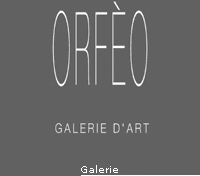

Elisabeth Defner: brooch 2015, amber, silver, dm. 100 mm

Elisabeth Defner: ring, amber, opal, silver

Christiane Förster: brooch 2015, mother of pearl, amber,
silver 57x50x7 mm

Heidemarie Herb: necklace "time" 2014, silver,
brass, iron, baltic amber 130 mm

Heidemarie Herb: rings, silber, amber

Herman Hermsen: brooch "Alladali" 2015, jaw of
shark, amber, gold 100x65 mm

Herman Hermsen: pendant

Beate Klockmann: earrings "Fragmente", amber, 40x20
mm

Beate Klockmann: ring, amber, gold

Helfried Kodré: brooch 2015, amber, silver 60x90 mm

Helfried Kodré: ring, argent, amber

Philippe Sajet: ring 2014, gold, amber

Philippe Sajet: ring 2014, white gold, amber, 35x18x11 mm

Peter Skubic: brooch "Todesengel" 2015, amber,
coral, stainless steel, 90x85x27 (not for sale)

Gisbert Stach: brooch "AT-Schnitzel", baltic amber,
silicon, steel,

Gisbert Stach: brooch "Golden Toast", baltic amber,
silicon, steel

Petra Zimmermann: 3 rings, 2014/15, amber, PMMA, gold
This exhibition shows a number of different approaches to
amber, running the gamut from artists working with amber for
the first time, to those who have been working with it for
an extended period.The contrasts in these works should help
to update the traditional and still rather one-sided view
of amber jewelry, showing new possibilities about this interesting
material.
More than something washed ashore
Edmund Spenser once wrote his lover’s name in the
sand at the shore,twice, but the waves washed it away.The
waves also transform amber, which is soft, warm, and can be
white,yellow, brown, black, or skin tone. Amber is an organic
substance, sometimes opaque, other times translucent, revealing
a glimpse of its interior, with wonderful inclusions of a
forgotten time. It can be alluring, electric, and when its
contact is desired, it has healing qualities.
Spenser’s lover told him that he and his gesture were
both vain and for naught, as both she and her name were ephemeral.
Spenser responded that his verses would immortalize her virtues
and inscribe her name in heaven.
While jewelry makers may be forced to work with more mundane
materials at their disposal, their works in amber need neither
explanation nor interpretation: The effect is immediate.
The philosopher Michel Foucault* declared the death of the
object as the source and basis of knowledge, freedom, language
and history, perceiving a danger that mankind would disappear
like footprints in the sand. Spenser reaches a different conclusion:
When death overtakes the world, our love lives on, and renews
the life that comes after it.
This is why jewelry makers work with amber: For a sense of
personal happiness, and for the well-being of the living.
Karl Bollmann
*Michel Foucault, Les Mots et les choses. Une archéologie
des sciences humaines,
1966, Dits et Écrits, 1994
|
Aktuelle Austellung
Ausstellungskalender |







